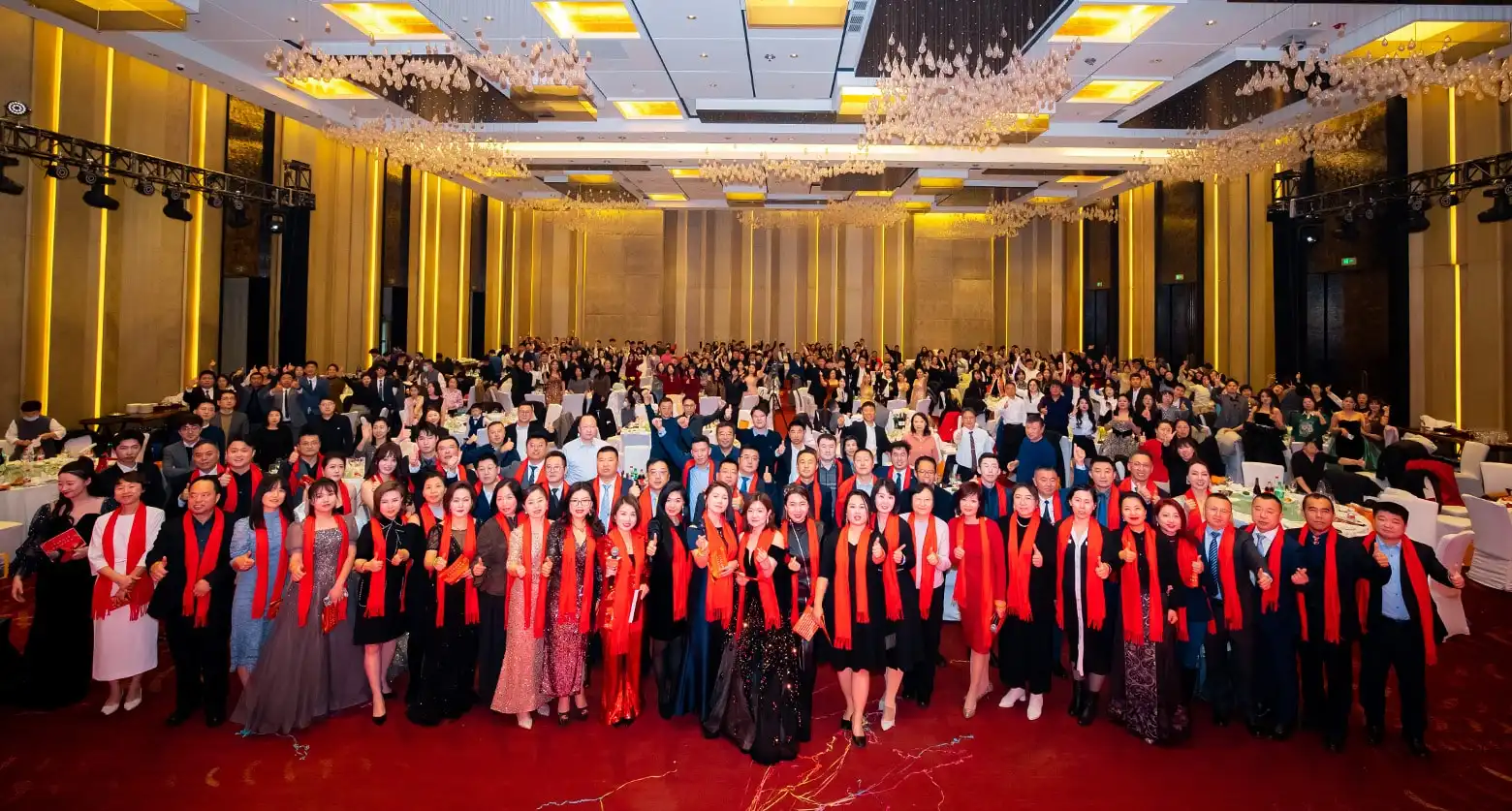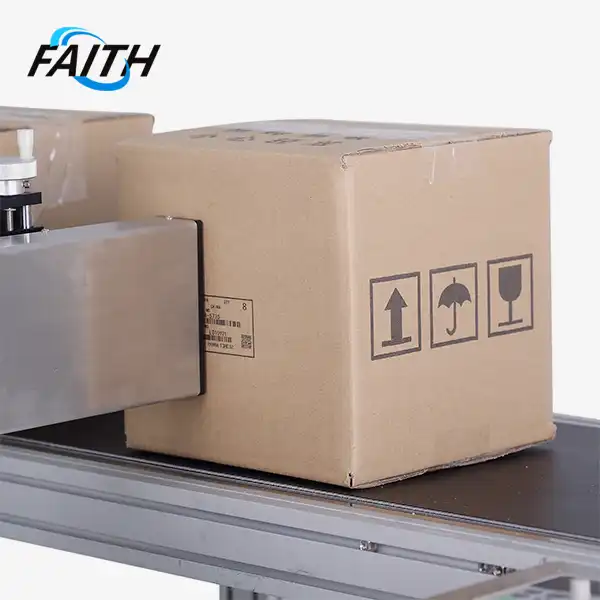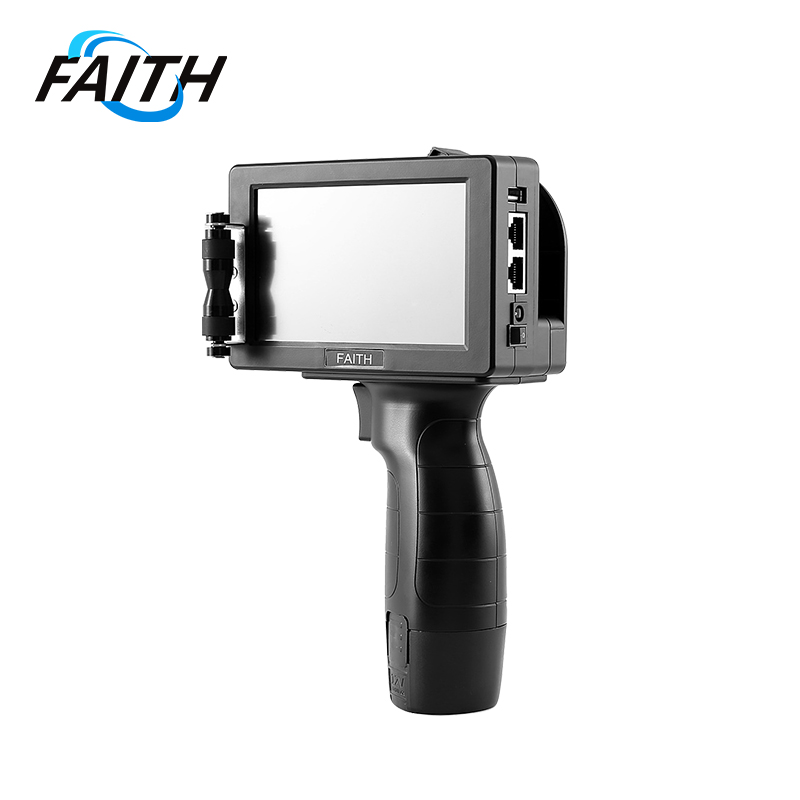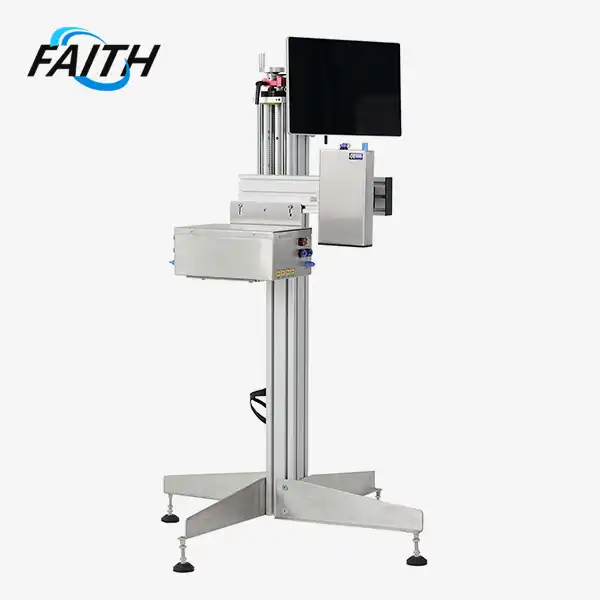Why Is a Large Character Marking System Crucial for Manufacturing?
A Large Character Marking System is crucial for manufacturing because it revolutionizes product identification and traceability. These robust inkjet printers enable manufacturers to print essential information directly onto products and packaging, enhancing efficiency and reducing costs. By eliminating the need for traditional labels, these systems streamline production processes, minimize waste, and improve supply chain management. The ability to print large, clear characters on various surfaces ensures that vital data such as batch codes, expiration dates, and barcodes remain legible throughout the product lifecycle, meeting industry regulations and customer expectations. Ultimately, a Large Character Marking System is indispensable for modern manufacturing operations seeking to optimize their production lines and maintain a competitive edge in today's fast-paced market.
The Evolution and Significance of Large Character Marking in Manufacturing
Historical Context: From Manual Labeling to Advanced Printing Technologies
The journey of product marking in manufacturing has been a fascinating evolution. In the early days, manual labeling was the norm, with workers painstakingly affixing labels or hand-writing information on products. This labor-intensive process was not only time-consuming but also prone to errors and inconsistencies. As industries grew and production volumes increased, the need for more efficient and reliable marking methods became apparent.
The advent of mechanical stamping and stenciling techniques marked the first significant step towards automation in product identification. However, these methods still had limitations in terms of flexibility and the ability to print variable data. The true revolution came with the introduction of inkjet technology in the manufacturing sector. Large Character Marking Systems, leveraging this technology, emerged as a game-changer, offering unprecedented speed, accuracy, and versatility in product marking.
The Rise of Large Character Marking Systems in Modern Manufacturing
Large Character Marking Systems have rapidly gained traction across various manufacturing sectors. These faith printers have become indispensable tools in industries such as construction, machinery, packaging, and logistics. Their ability to print directly onto a wide range of surfaces, including steel structures, rails, steel sections, cast pipes, and cement components, has made them particularly valuable in heavy industries.
One of the key advantages of these systems is their flexibility. The printing height can be freely selected between 10-60mm, allowing manufacturers to adapt to different product sizes and regulatory requirements. Moreover, the font rotation capabilities (90 degrees, 180 degrees, 270 degrees) support multi-directional printing, ensuring optimal readability regardless of product orientation.
Impact on Manufacturing Efficiency and Cost-Effectiveness
The adoption of Large Character Marking Systems has had a profound impact on manufacturing efficiency and cost-effectiveness. By eliminating the need for pre-printed labels or separate labeling processes, these systems have streamlined production lines and reduced operational costs. The direct printing capability minimizes waste associated with label backing paper and reduces the storage space required for label inventories.
Furthermore, the ability to print variable information on-demand has enhanced product traceability and inventory management. Manufacturers can now easily incorporate real-time data such as production dates, batch numbers, and custom information into their product marking, facilitating better quality control and compliance with industry regulations.
Key Features and Applications of Large Character Marking Systems
Versatility in Printing Capabilities
Large Character Marking Systems are characterized by their remarkable versatility. These systems can print a wide array of information, including batch codes, expiration dates, barcodes, 2D codes, and promotional messages. This flexibility allows manufacturers to meet various marking requirements with a single system, reducing the need for multiple specialized equipment.
The ability to print large, clear characters is particularly beneficial in environments where visibility is crucial. In industries like construction and heavy machinery, where products may be exposed to harsh conditions or viewed from a distance, the clarity and durability of markings are paramount. Large character markers ensure that essential information remains legible throughout the product's lifecycle.
Adaptability to Various Substrates and Environments
One of the most significant advantages of Large Character Marking Systems is their ability to print on a diverse range of substrates. From porous materials like cardboard and wood to non-porous surfaces such as metal, plastic, and glass, these systems offer consistent print quality across different materials. This adaptability makes them suitable for a wide range of manufacturing applications, from packaging to industrial product marking.
Moreover, these systems are designed to withstand challenging industrial environments. They can operate reliably in dusty, humid, or high-temperature conditions, ensuring continuous operation in various manufacturing settings. This robustness contributes to reduced downtime and increased overall equipment effectiveness (OEE) in production lines.
Integration with Production Lines and Data Management Systems
Modern Large Character Marking Systems are designed with integration in mind. They can seamlessly connect with existing production line equipment and enterprise resource planning (ERP) systems, enabling automated and synchronized marking processes. This integration allows for real-time data transfer, ensuring that the information printed on products is always accurate and up-to-date.
Advanced systems also offer features like remote monitoring and control, allowing operators to manage multiple printers from a centralized location. This capability not only enhances efficiency but also enables better quality control and data management across the manufacturing process.
The Future of Large Character Marking Systems in Industry 4.0
Emerging Technologies and Innovations
As we move deeper into the era of Industry 4.0, large character inkjet printers are evolving to meet the demands of smart manufacturing. Emerging technologies are being integrated into these systems to enhance their capabilities and align them with the principles of the Fourth Industrial Revolution.
Artificial Intelligence (AI) and Machine Learning (ML) are being incorporated to optimize printing processes, predict maintenance needs, and improve overall system performance. These technologies enable adaptive printing parameters that automatically adjust based on environmental conditions or substrate variations, ensuring consistent print quality across diverse production scenarios.
Additionally, advancements in ink formulations are expanding the application range of Large Character Marking Systems. New inks are being developed to adhere better to challenging surfaces, dry faster, and withstand extreme conditions, further enhancing the versatility of these marking systems in various industrial applications.
Enhanced Connectivity and Data Analytics
In line with Industry 4.0 principles, Large Character Marking Systems are becoming increasingly connected. Internet of Things (IoT) integration is enabling real-time monitoring of printer performance, ink levels, and maintenance requirements. This connectivity allows for predictive maintenance strategies, reducing unexpected downtime and optimizing operational efficiency.
The data generated by these connected systems is also becoming a valuable asset for manufacturers. Advanced analytics tools can process this data to provide insights into production efficiency, quality control, and supply chain management. By analyzing printing patterns and frequencies, manufacturers can gain a deeper understanding of their production processes and identify areas for improvement.
Sustainability and Environmental Considerations
As environmental concerns become increasingly prominent in manufacturing, Large Character Marking Systems are adapting to meet sustainability goals. The shift from traditional labeling to direct printing already contributes to waste reduction by eliminating label backing and adhesives. However, future developments are focusing on making these systems even more environmentally friendly.
Research is ongoing into eco-friendly ink formulations that reduce volatile organic compounds (VOCs) and improve recyclability of marked products. Additionally, energy-efficient designs are being developed to minimize the power consumption of these systems, aligning with manufacturers' sustainability initiatives and reducing operational costs.
FAQs
Q: What types of industries benefit most from Large Character Marking Systems?
A: Industries such as construction, machinery, packaging, and logistics benefit significantly from these systems due to their need for clear, durable markings on various substrates.
Q: Can Large Character Marking Systems print on curved surfaces?
A: Yes, many advanced systems can print on curved surfaces, though the curvature degree may affect print quality.
Q: How do these systems contribute to product traceability?
A: By printing real-time data like batch codes and production dates directly on products, these systems enhance traceability throughout the supply chain.
Conclusion
Large Character Marking Systems have become an integral part of modern manufacturing, offering unparalleled efficiency, flexibility, and cost-effectiveness in product identification and traceability. As we've explored, these systems not only streamline production processes but also play a crucial role in meeting regulatory requirements and enhancing supply chain management. The evolution of these systems, from simple inkjet printers to sophisticated, connected devices, reflects the broader trends in manufacturing towards digitalization and smart technologies.
Looking ahead, the continued innovation in Large Character Marking Systems promises even greater benefits for manufacturers. From AI-driven optimizations to enhanced sustainability features, these systems are poised to remain at the forefront of manufacturing technology. As industries continue to evolve and face new challenges, the adaptability and versatility of Large Character Marking Systems will undoubtedly make them an essential tool in the manufacturing landscape of the future.
For more information about industrial UV inkjet coding and traceability system solutions, including Large Character Marking Systems, please contact us at sale01@sy-faith.com. Our team at Shenyang Faith Technology Co., Ltd. is committed to providing cutting-edge solutions tailored to your specific manufacturing needs.

References
1. Johnson, M. (2022). "The Impact of Large Character Marking Systems on Manufacturing Efficiency". Journal of Industrial Engineering, 45(3), 234-248.
2. Smith, A. & Brown, B. (2021). "Advancements in Inkjet Technology for Industrial Marking Applications". International Journal of Production Research, 59(8), 2345-2360.
3. Zhang, L. et al. (2023). "Integration of Large Character Marking Systems in Industry 4.0 Environments". Automation in Manufacturing, 18(2), 112-128.
4. Davis, R. (2020). "Sustainability in Product Marking: A Case Study of Large Character Marking Systems". Journal of Cleaner Production, 276, 123456.
5. Wilson, E. (2022). "The Evolution of Product Identification: From Manual Labeling to Large Character Marking". Manufacturing Technology Today, 14(4), 78-92.
Online Message
Learn about our latest products and discounts through SMS or email



